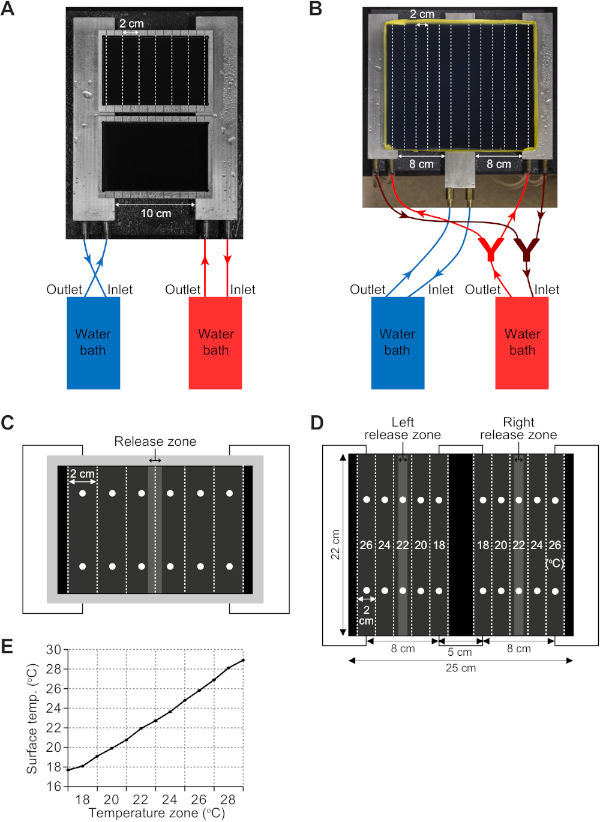A subscription to JoVE is required to view this content. Sign in or start your free trial.
Temperature Gradient Assay: A Method to Test Temperature Preference in Drosophila Larvae
Overview
Drosophila fruit flies can distinguish small changes in temperature and therefore select environments with favorable thermal conditions. This video describes a behavioral assay that tests the temperature preference of Drosophila larvae on a linear thermal gradient.
Protocol
This protocol is an excerpt from Liu et al. A Temperature Gradient Assay to Determine Thermal Preferences of Drosophila Larvae, J. Vis. Exp. (2018).
1. Temperature Gradient Setup
- Prepare single-directional gradient
- To create a humid ambient environment during the assays, place the two aluminum blocks connected to two water baths on wet paper towels, separated by 10 cm (Figure 1A).
Representative Results

Figure 1: Single and bidirectional gradient assay setups. (A) Single-directional gradient setup with two aluminum assay plates on two aluminum blocks. The temperatures of the aluminum blocks are controlled by circulating water from two water baths. (B) The arrangement of the three aluminum blocks, water baths and an aluminum plate (250 x 220 mm) for a bidirectional gradient. The left.......
This article has been published
Video Coming Soon
Source: Liu, J., et al. A Temperature Gradient Assay to Determine Thermal Preferences of Drosophila Larvae. J. Vis. Exp. (2018).
ABOUT JoVE
Copyright © 2025 MyJoVE Corporation. All rights reserved